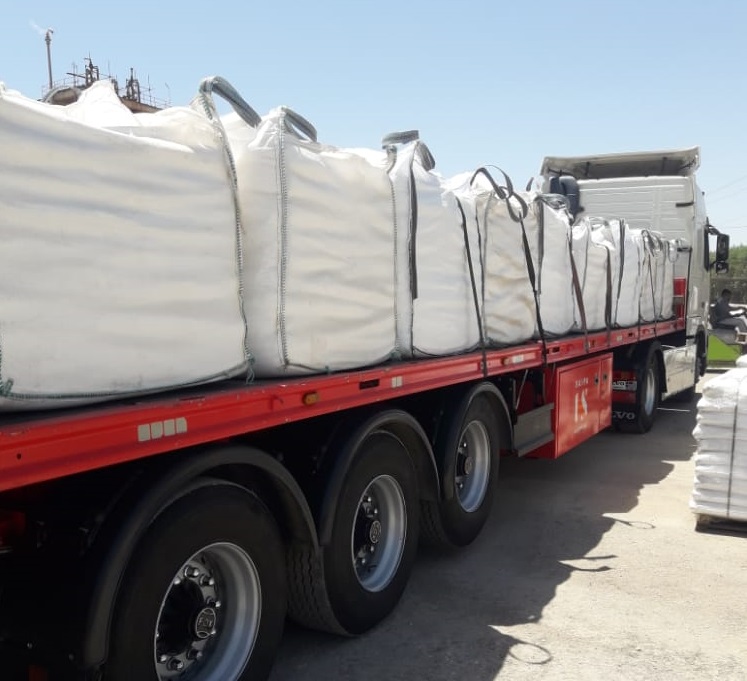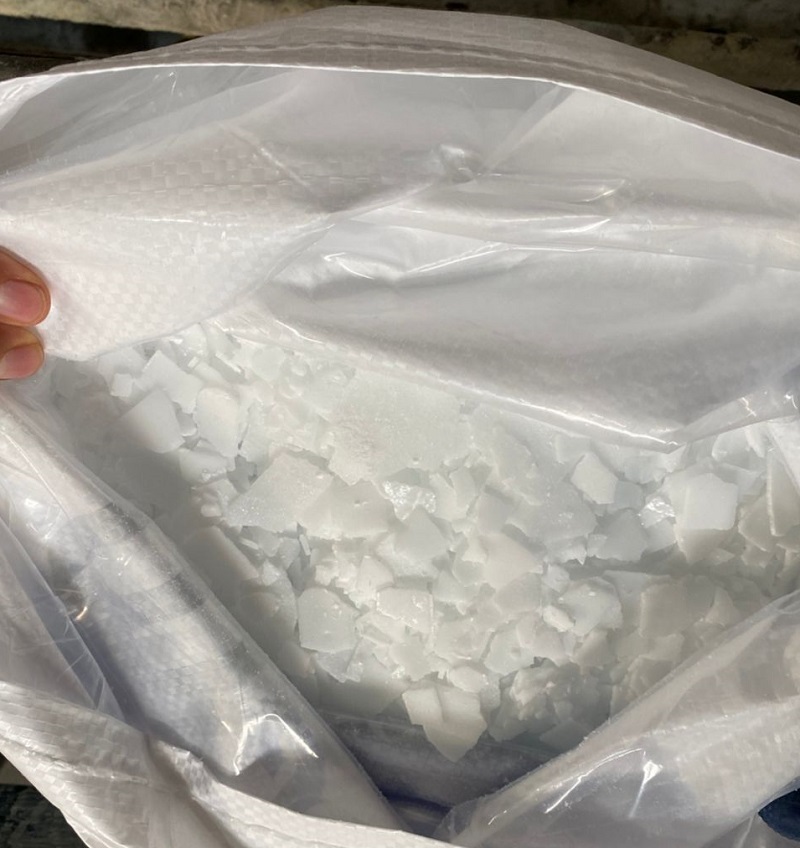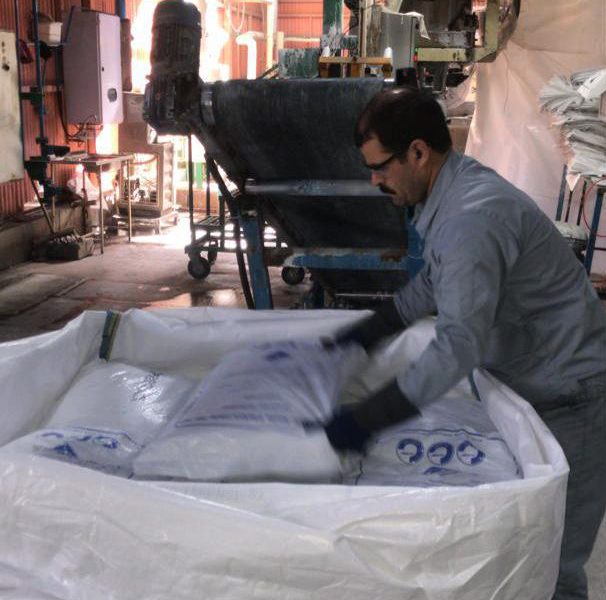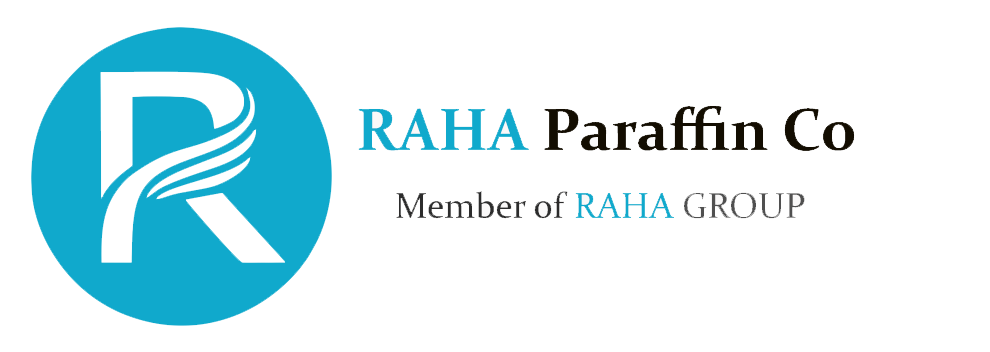caustic soda flake

Caustic Soda Flake Description
Caustic soda flake or Sodium hydroxide is an inorganic compound with formula NaOH. It is a white solid ionic compound consisting of sodium cations Na+ and hydroxide anions OH-. Sodium hydroxide is a highly caustic base and alkali, that decomposes proteins at ordinary ambient temperatures and may cause severe chemical burns. It forms a series of hydrates NaOH.nH2O. The monohydrate sodium hydroxide (NaOH.H2O) crystallizes from water solutions between 12.3 and 61.8 °C.
Caustic soda flake is probably the lesser-known product of the Chloralkali process, which is the electrolysis procedure used to free chlorine (Cl) from the sodium chloride (NaCl) found in salt brine. When chemical manufacturers produce chlorine, they also end up producing a comparable amount of caustic soda, which is in many ways as useful as its chemical counterpart.
The commercially available ” caustic soda flake ” is often this monohydrate, and published data may refer to it instead of the anhydrous compound.When dissolved with water or neutralized with acid, it produces a considerable amount of heat. It is mostly traded as an aqueous solution, typically concentrated to 50%, but many other concentrations are commercially available depending on the application of the compound.
It is available in many forms in the industry, and the most common forms are caustic soda flakes and caustic soda pearls. Sodium hydroxide as a strong base, is considered from one of the most important industrial chemicals and strong absorbent of moisture.
caustic soda flake is used in many industries in the manufacture of pulp and paper, textiles, drinking water, soaps and detergents and as a drain cleaner.
Caustic Soda Flake Characteristic
At room temperature, caustic soda flake is a white crystalline odorless solid that absorbs moisture from the air. It is a manufactured substance. When dissolved in water or neutralized with acid it liberates substantial heat, which may be sufficient to ignite combustible materials. caustic soda flake is very corrosive. It is generally used as a solid or a 50% solution. Other common names include caustic soda and lye.
Though there is no danger that it will explode or ignite, it reacts with different acids, such as with hydrochloric acid, and is neutralized and generates considerable exothermic neutralization heat.
Metals like aluminum, tin and zinc are corroded. It generates hydrogen during this process, which can act as an explosive gas.
It is highly hygroscopic, absorbing in the air moisture, carbon dioxide, or sulfur dioxide. It is also highly delicate and absorbs humidity to form a watery solution.
When liquid sodium hydroxide is diluted, a significant amount of dilution heat is generated. Because this quickly produces high heat and the resulting solution can spatter if the water is carelessly poured into it, care must be taken.
Sodium hydroxide breaks down animal fibers easily. Despite the decomposition of plant fibers, they have a higher resistance than animal fibers. Although corrosion-resistant materials include stainless steel, steel-epoxy resins and fiber-reinforced plastics, steel, and rubber-lined steel are the most frequently used materials.

As a summary in characteristics of caustic soda flake:
1. The raw material for various industrial products
2. Co-product in chlorine synthesis
3. Strong base
4. Highly corrosive
5. Auxiliary chemical
6. Odorless material
Caustic Soda Flake Application
Caustic Soda Flake or Sodium hydroxide is used to manufacture many everyday products, such as paper, aluminum, commercial drain and oven cleaners, and soap and detergents.
Caustic Soda Flake is used to manufacture soaps, rayon, paper, explosives, dyestuffs, and petroleum products. It is also used in processing cotton fabric, laundering and bleaching, metal cleaning and processing, oxide coating, electroplating, and electrolytic extracting. It is commonly present in commercial drain and oven cleaners.
Due to caustic soda flake factors, it has used in many different industries. In the food industry: milk industry, canning, olive sweetening, water treatment, chocolate production, cocoa and caramel production, vegetable and fruit washing, soft drinks, oil refining, sugar, and sugar production.
In the metal and electroplating industries: metal, zinc, aluminum, galvanizing and electroplating, glass. Battery industry and neutralize the acid and battery, The Pharmaceutical industry.
Alcohol and cosmetics, Industry consuming fatty, leather and textile, industry and Dyeing industry, Oil, gas and petrochemical industry, Cardboard and paper industry, Leaf profit (caustic soda) pack, Drilling Mud, Detergent and Soap Making, Biodiesel, Aluminum etching, Domestic uses, Tissue digestion, Delignification of cellulosic materials and, Pulp and paper.
Caustic Soda Flake Packing
There are different kind of packing for industrial caustic soda flake, since caustic soda /sodium hydroxide is chemical product better to pack in 25 kgs 2 layer laminate PP bag and don’t allow any water to moisture enter the bag , also for transportation and reducing labor charges we can put bags in 1250 Kg jumbo bag or 1250 Kg pallets are possible.
Food grade caustic soda flake ship in safe metal container which keep away soda from moisture and humid condition , Hydroxide is hydrophilic which means that it not only attracts moisture and water but it actively absorbs any moisture or water to which it is exposed.

Caustic Soda Flake Analysis
| CONTENT | TEST RESULT | UNIT |
|---|---|---|
| Al2O3 | Max 3 | PPM |
| Fe | 10 | PPM |
| Heavy Metals as Pb | Max 2 | PPM |
| Insoluble in Water | 0 | %W |
| Na2CO3 | 0.43 | %W |
| Na2SO4 | 0.0047 | %W |
| NaCl | 0.0085 | %W |
| NaOH | 98%±1 | %W |
| SiO2 | 0.0019 | %W |
| SHAPE | 0.3-1 | CM³ |
DOWNLOAD TECNICHAL DATA SHEET


